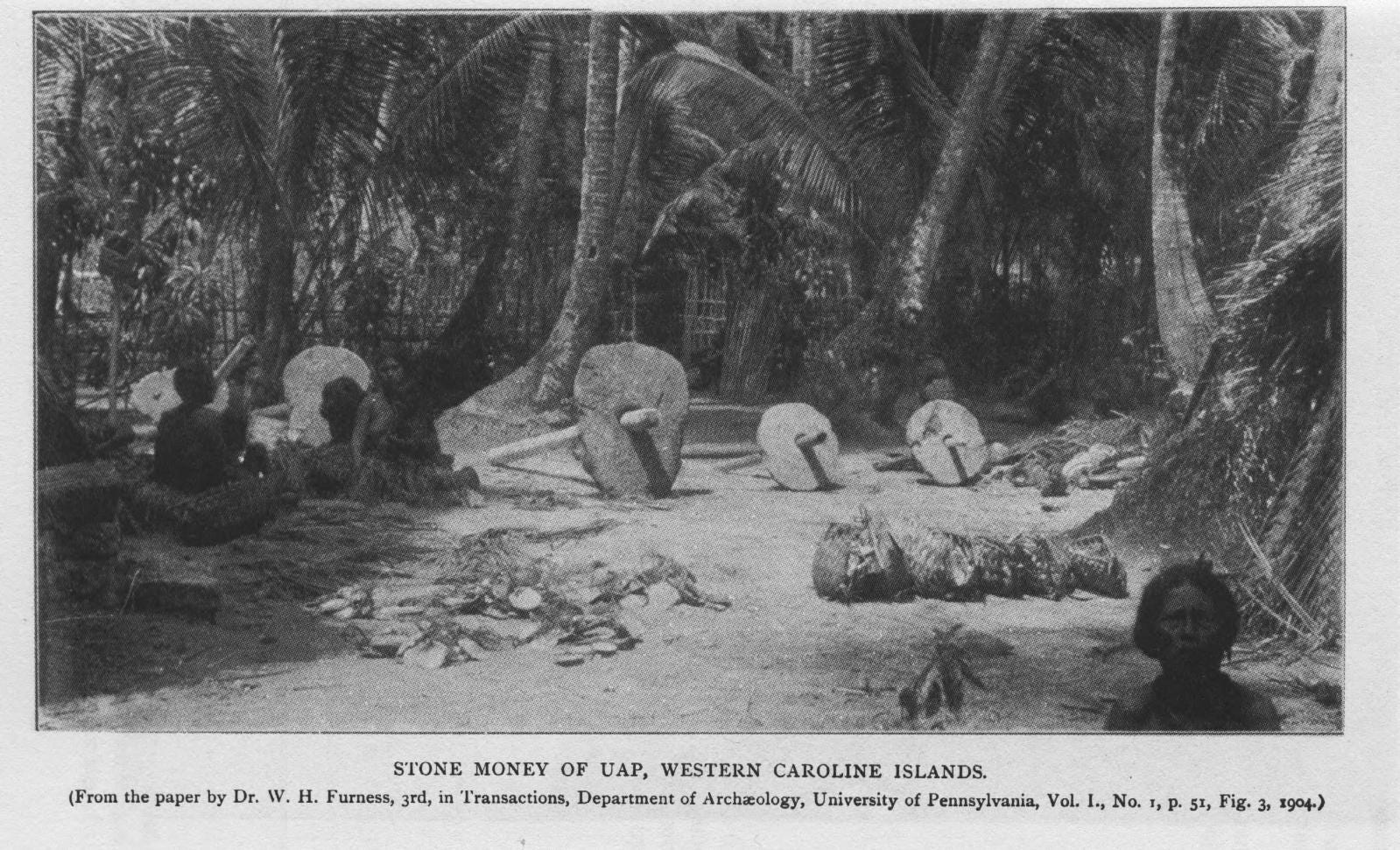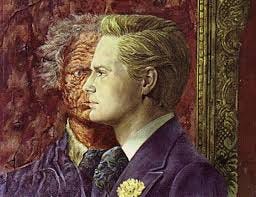
“What is this chasm between how most institutions profess to function and how they actually do; between what they claim to do for people and what they actually do to them? What makes people behave in the name of institutions in ways they would never behave in their own name? Church, school, government — all the same” — Dee Hock, Founder and CEO Emeritus, VISA
Heinrich von Kleist (1777–1811) wrote a story of a “the fencing bear”, who was being trained on the estate of a Baltic nobleman. The sons of this man had a passion for fencing. The family once welcomed a guest, who easily beat these sons at fencing. The guest tells the rest of the story goes as follows.
“They took me by the hand and led me outside to make the acquaintance of a bear which their father was rearing on the farm. The bear, as I in my surprise approached him, reared up on his hind legs, his back against the post to which he was chained, his right paw poised for the strike, and looked me in the eye: that was his fencing posture.
I thought I must be dreaming to find myself faced with such an opponent, but Herr von G– called, ‘Strike! Strike! And try to hit him!’ Recovering from my surprise somewhat I made a lunge; the bear made a very short movement with his paw and parried my thrust.
I tried fooling him with feints — the bear did not move. With spontaneous agility I lunged once more, and would surely have touched any human breast; the bear made a very short movement with his paw and parried my thrust. The earnestness of the bear was robbing me of my composure, thrusts and feints followed on one another, I was dripping with sweat: in vain! It was not merely that the bear, like the world’s leading fencer, parried every one of my thrusts, but to my feints he reacted not at all. Eye to eye, as though he could read my very soul, he stood with his paw poised for the strike, and if my thrusts were not in earnest he simply did not move.
I use von Kleist’s fencing bear story to highlight the need for “authentic authenticity”. The bear knows the difference between what was real (the real thrust) and what was fake (the feints). This story brings to mind the behaviour of so many organisations, who promote a certain message, a certain persona, and behave in a totally different way. While it may be a little crude, this is a case of lipstick on a pig, even when a pig wears lipstick, it is still a pig. We see this with Ryanair for example, who spent a fortune to advertise and market that they are customer centric, but then behave in a totally contradictory way.
Beyond marketing and advertising, this happens at organisational and business level much too frequently. This happens with inauthentic leaders all the time. Even worse, if a narcissist is in charge, they do not even know they are being inauthentic.
This Thursday Thought explores a future where organisations and leaders will have no choice but to behave the way they purport to behave.
I call this “Blockchain Leadership”.
Blockchain Leadership
For those who may be unfamiliar with blockchain, here is a simple way to grasp the concept.

Rai stones are large doughnut-shaped, carved disks of calcite, up to 12 feet in diameter (see image above). The people of the Pacific island of Yap use Rai stones as a form of value exchange. The stones were legal tender and even mandatory for the payment and settlement of large transactions. The stones were obviously too big to carry around in pockets and there was no such thing as a middleman to monitor their use and track records of their ownership, but the people of Yap found a way.
Ownership of Rai stones was recorded orally. Just as folklore is/was passed from generation to generation to preserve history, Rai stone ownership was recorded orally by the people of the community.. As Dominic Frisby told us on this innovation show: “Tony owns the one down by the beach” shared amongst the community, was record enough. Transparency and the validity of the transaction was ensured when the entire community kept an oral record of who owned what.
To avoid undesirable behaviour, the record of a transaction was decentralised and distributed across the community and there was no middleman to keep a central record.
This is a simple way to understand how Blockchain works.
A simplified explanation is that a blockchain is a database shared across a network of computers (just like the network of people of Yap). When a record (a deal for example, including a digital signature) is added to the “chain” it is very difficult to change. Every new record is checked by the network of computers (the people of Yap) to ensure that deal/record is valid and they must all agree that it is indeed valid. Records are bundled together to create a “block” of records. These blocks are linked together to create “chains”, hence “block-chains”.
If someone tries to fake a record or change one, the change will be checked across the network to see if that change is valid. In Yap terms, the network of people all verify: “Did Tony give Jerry his Rai stone for a piece of land?” Does everyone in the community agree that this happened? If only one person said this happened and others disagree, then it breaks the chain and raises a flag. This is why Blockchain is so secure and verifies that a record is authentic.
I share that concept to pose this question, What if this record keeping counted for leadership and corporate behaviour? What if it verified authenticity?
You Are What Your Record Says You Are
Bill Parcells was coach of the New England Patriots. Parcells famously said “You are what your record says you are.”
In the context of this Thursday Thought, I use it Parcells line to illustrate that it is increasingly difficult to “control” a public-facing story, which conflicts with your authentic story. Such transparency is increasingly forced upon organisations, because there are increasingly less ways to hide authentic nature.
This trend towards authenticity has been proliferated by technology, a global shift from analog to digital and the mass democratisation of information. Public recommendations count much more than organisational claims. Individuals can connect on Linkedin to enquire about a potential new manager before applying for a role. Consumers can check customer reviews before we buy a product.
There are very few ways to fake the truth. (In our connected world, the best way to fake the truth is to make us distrust all news, to put poison in the well, which is what we are witnessing with the fake news epidemic, no-one knows who to trust, so we trust no-one. This is exactly the opportunity for public broadcasters, but that is a future Thursday Thought).
To Thine Own Self Be True
“This above all: to thine own self be true, And it must follow, as the night the day, Thou canst not then be false to any man.” — Polonius, (Act 1, Scene III , Hamlet by William Shakespeare)

In a world of “Blockchain Leadership”, a leader must act as they purport to act, their proposed persona must align with their authentic persona. This accountability will bring “authentic authenticity” to business practices, which are often a shadow of the leader. Gone will be the days where organisations sell a great story to willing and eager recruits and then deliver an entirely contradictory experience.
When this happens (and it happens a lot) employees can feel trapped and duped, especially if they have just gone through a similar experience in their previous role. Employees often lack the will to go through another career change, or they are embarrassed by how it might look on their record. Other times they will lack spousal support and in the worst of cases, they may even believe that they themselves are the problem. This is not you, you have been “sold a pup”.
Smart leaders will realise that they must be proactive in this age of increasing transparency. They must “skate to where the puck is going” and the puck is headed for authenticity. Leaders must initiate their personal leadership development programme (a true leader will realise this process does not have a destination, like fitness, it is a journey).
Most important of all, leaders must look themselves in the mirror and uncover their authentic selves and choose to be who they really are. It is very draining to mask our true nature, that nature will always shine through.
There is a term called Personal congruence, which refers to a state in which a person’s values and beliefs are consistent with the way he or she lives his or her life. In essence, it means to be authentic in your words and actions.
Congruence is the key to Blockchain Leadership, to do as you say, and say as you do. To achieve congruency, leaders must be vulnerable to themselves and to others. The journey of personal growth starts with self awareness and self assessment. Leaders must align their work-selves with their their true selves, but for leaders to achieve this, the business world needs to make seismic shift.
The world has evolved, but old order still prevails. Organisational structures built for an industrial age still reign supreme. With archaic organisational structures come archaic leadership styles, honed for a command-and-conquer business world.
In the current order, the behaviours that match the archaic style are unfortunately still rewarded. Leaders who exhibit hard-edge, old-school characteristics get ahead, despite organisational claims to promote for softer, contemporary skills. The declared desires of the organisation do not match the behaviours of the organisation. The organisation is in a state of incongruence. This inconsistency a dilemma for leadership, do they wear the mask that will get them the top job or do they remain true to their authentic selves?
This is the current battleground for competitive advantage, businesses who can marry their external message to their internal behaviours will attract the best talent. If organisations are simply a group of people working towards a common shared vision, attracting the best people will result in creating the best organisation. If authentic people rally around an authentic purpose and the organisation seeks congruence, everyone will win.
The era of Blockchain Leadership, of authentic authenticity, we welcome you.
THANKS FOR READING, MORE LIKE THIS HERE: https://medium.com/thethursdaythought
EP 131 of the Innovation show is with international adviser, scholar, speaker and author of “Imaginative Communities: Admired cities, regions and countries” Dr Robert Govers
Many of us feel uneasy with the lack of recognition that our community, city, region or country receives internationally and with the stereotypes and outdated clichés by which “outsiders” define us. This has probably been the case for as long as man exists, but in today’s world with its global connections and social media, it is becoming more apparent, more relevant and more frustrating; to citizens generally, but in particular to policymakers, public administrators, leaders and representatives in public, private and civil society sectors.
Why this is so and what to do about it is the focus of today’s show. We will discuss the topic of community reputation. For communities to be admired, they need a sense of belonging and purpose in order to do amazing imaginative things befitting their character while captivating others.
We discuss:
- Place reputation, how it impacts other’s view of us and our view of ourselves
- “Think twice before you speak, because your words and influence will plant the seed of either success or failure in the mind of another.” — Napoleon Hill. People can be influenced by how others speak about them and then it can become a self-fulfilling prophecy.
- Globalization: In 2000, 2/3s of the worlds online population was from North America and Europe. In 2010 2/3s of the worlds online population was from elsewhere
- How countries, regions and cities can no longer compete based on functional characteristics like accessibility, service levels and other advantages
- How interconnectedness and globalisation have led to homogeneity so imagination can be a competitive advantage?
- “Imagination is its own form of courage” — Frank Underwood, House of Cards
- How it takes courage to paddle your own canoe, just like business, just like life
- Kazakhstan and the “Stan Effect”
- Collaboration as a key to gain maximum benefit from imagination
- The story about Oslo’s future library
- “The true meaning of life is to plant trees, under whose shade you do not expect to sit.”
- Estonia as an imaginative community
- The little-known country of Bhutan and its gross national happiness
- Most of our listeners are in the USA so let’s share the imaginative virtues that founded America?
- Communicating communities, you can’t advertise this, it is pull and not push
- Communities addressing existing clichés and stereotypes?
- Finland (hello to our listeners on Business FM) where they developed their own set of emojis
- Communities are built on mental Models: Schema and Schemata
- How we limit information processing and selective learning by applying five filters?
- How mainstream Media also plays a huge part
- The 2006 World Cup hosted by Germany and Germany’s goal to change its reputation to be one that is much more friendly than perceived
- How marketing requires reputation and reputation leads to sharing of great experiences
- Like any strategy, we tend to focus on short-term returns on investment. This is a long game you want perceptions to seep into the consciousness of outsiders
Have a listen:
Have a listen
Soundcloud https://lnkd.in/gBbTTuF
Spotify http://spoti.fi/2rXnAF4
iTunes https://apple.co/2gFvFbO
Tunein http://bit.ly/2rRwDad
More about Robert here: https://rgovers.com & https://www.imaginativecommunities.com/contents/